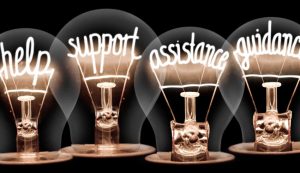Tradition Nine is kind of buried, and it seems like one of those boring maxims about how we set up shop. Yeah, yeah, so we can have an intergroup and world service, isn’t that special . . . who wouldn’t have thought of that?
OA works because it’s not organized . . . But being “not organized” isn’t the same as being “disorganized.”
But imagine if the opposite were true. Imagine if Tradition Nine said, “OA ought to be highly structured and hierarchical. Every local group’s mission is to serve the greater good as determined by OA’s leadership.” Imagine the clawing and ladder-climbing that would ensue as we control-freak OA members tried to manage our way up the hierarchy, all so we could show everyone the right way to run the program. Imagine the hurt and resentment, the bitter power struggles, the rebellions, factionalism, and anger. OA would last about as long as a polar bear in the Amazon—if we were lucky.
As it is now, Tradition Nine gives us guidance about how to get things done locally and more broadly. We form service bodies that report to those they serve. That’s right, in OA, the intergroup is not the boss! The intergroup is a collection of (hopefully) humble servants who act on behalf of their local meetings to carry the message in the broader community.
OA works because it’s not organized. There are no stars or VIPs that rise through a power structure to tell us all what to do. But being “not organized” isn’t the same as being “disorganized.” Tradition Nine facilitates getting the work of OA done without dissolving into chaos.
— Edited and reprinted from OA Today newsletter, St. Louis Bi-State Intergroup, September 2017





